Jakarta (Indonesia), 18-20 November 2020 - The spread of Covid-19 has boosted the prospects of criminal networks across the region, catalyzing trafficking and cyberattacks in the health sector and heightening the risks of corruption and fraud. There is growing recognition that, in many countries, the prevention of corruption will be key to economic and public health recoveries. Even prior to the pandemic, research suggests that corruption in the health sector globally causes $500 billion in losses each year – undermining the effectiveness of services, trust in public institutions and social equality.
In Indonesia, UNODC has been working closely with the Corruption Eradication Commission (KPK), holding joint webinars on key anti-corruption topics in the context of national legislation and challenges. Key challenges persist, however, around the concealment of corrupt monies using a range of sophisticated methods. The ability of investigators to track transactions is crucial when it comes to identifying links between suspects, gathering evidence of corruption, confiscating assets and returning corrupt funds. To build capacities on the more challenging, technical elements of investigations, UNODC held a bespoke online training on financial investigations in corruption investigations, from 18 – 20 November 2020.
“Investigators are the vanguard of any corruption case,” Collie Brown, UNODC Country Manager for Indonesia stated. “How they handle evidence, interview witnesses and navigate the financial aspects of a case is crucial to the success of investigations and outcome of the ensuing trial.”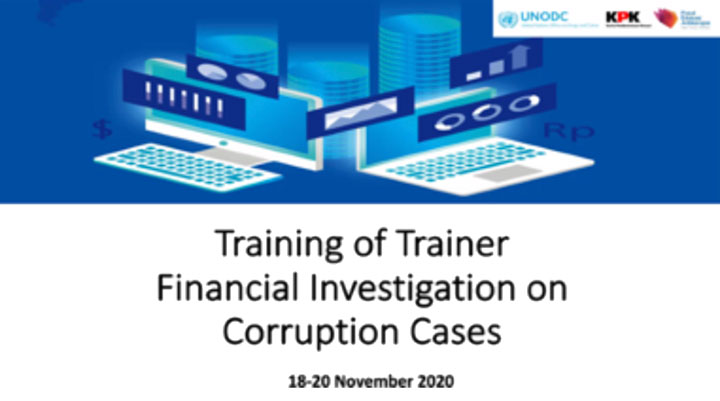
Source: Training Presentation on Financial Investigations
Some key messages highlighted during the workshop include:
Money Laundering & Corruption Are Inextricably Interlinked
Money laundering is not a single activity, but a complex process to conceal the origins of illegally obtained money. It typically consists of three main stages: placement (the concealment of the profit’s illegal origin, e.g. through the blending of funds of legal and illegal origin, asset purchases or currency smuggling), layering (placing the money into circulation in order to make it more difficult to track, e.g. through international wire transfers and the buying and selling of assets), and integration (the movement of already-laundered money back into the economy as “legitimate earnings”, e.g. through foreign bank complicity, property dealing, front companies and false loans).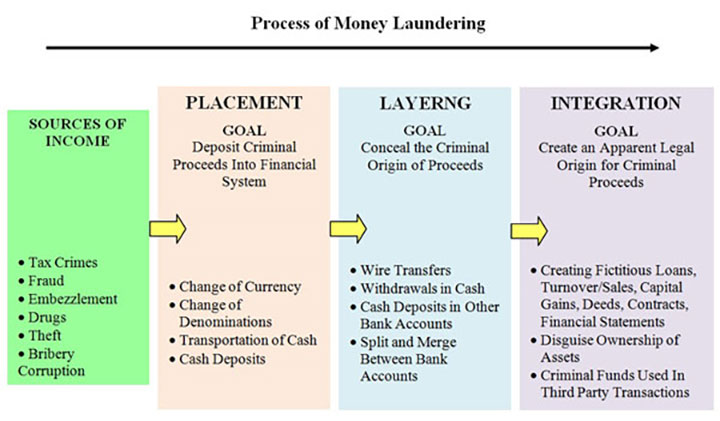
Source: Training Module on Money Laundering in Corruption Cases
The precise money laundering approaches that criminals adopt frequently depends on the nature of the corrupt act, existing links to complicit individuals and available opportunities to conceal the source of funds. In practice, money laundering and corruption are interlinked, making each topic of great significance to investigators of either crime.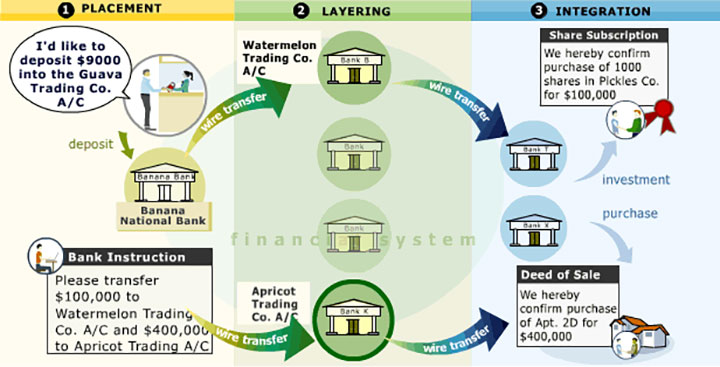
Source: Training Module on Money Laundering in Corruption Cases
Gatekeepers Can Shield Corrupt Persons and Bypass Controls
The role of gatekeepers – individuals who control access to the financial system and facilitate money laundering – should not be overlooked in financial investigations in criminal investigations of corruption offences. They may be legal or financial experts, and typically help to create corporate vehicles, open bank accounts, transfer proceeds, purchase property, courier cash etc. in order to bypass Anti-Money Laundering (AML) controls. Gatekeepers may exploit rules around attorney-client privilege to shield the identity of corrupt officials.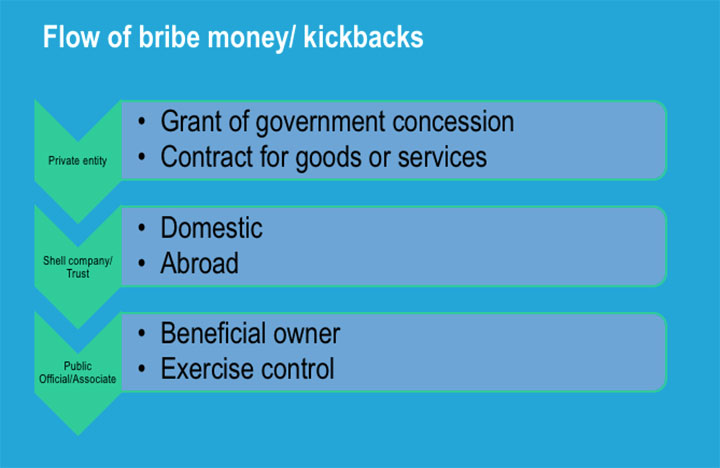
Source: Training Module on Money Laundering in Corruption Cases
Suspicious Behaviour of Trust Fund Applicants as a Red Flag
The proceeds of corruption are often hidden using legal and financial vehicles that enable the ownership of assets not to be publicly disclosed, including through foundations, trusts or virtual assets. Because of this, KYC and other banking information of suspects can be of great significance to investigators. Warning signs can include quantities or types of funds whose source cannot be readily explained, by applicants with no justifiable relationship to the known assets, in branch locations inexplicably far from where the documented economic activity occurs. Meanwhile, cash deposits may indicate fractioning, involving amounts lower than but approaching the established control limit, carried out in different offices of a financial institution within the same short time period.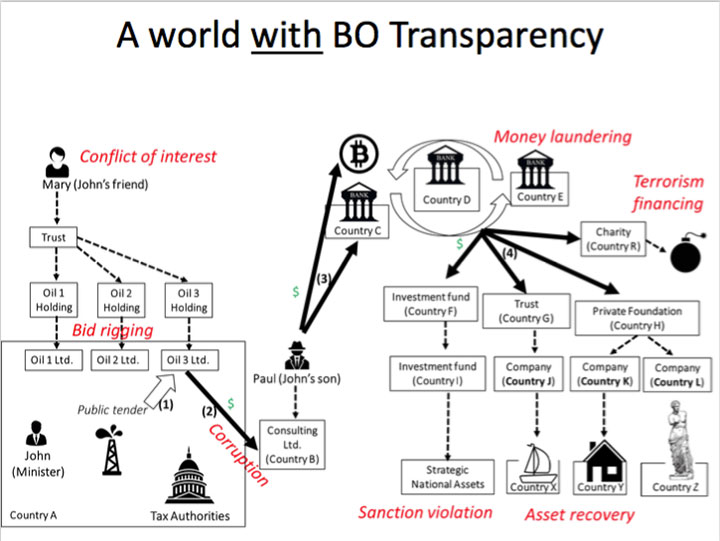
Source: Presentation by Andres Knobel (Tax Justice Network) in UNODC Webinar on Beneficial Ownership
Financial investigators need to be familiar with documents of interest that are filled out either at the time of application, when money or assets are received, or withdrawn or when the fiduciary makes a payment to or on behalf of one of its trustors.
Twenty-five officers (eleven female) from corruption investigation and prosecution agencies in Indonesia participated in the online training. In the post-training evaluation, all respondents confirmed that they expected to use skills from the workshop within the next 6 months. The majority of participants reported that modules on financial instruments, net worth analysis and money laundering were particularly useful, and singled out cryptocurrencies, capital markets and forensic accounting as relevant topics for future trainings.